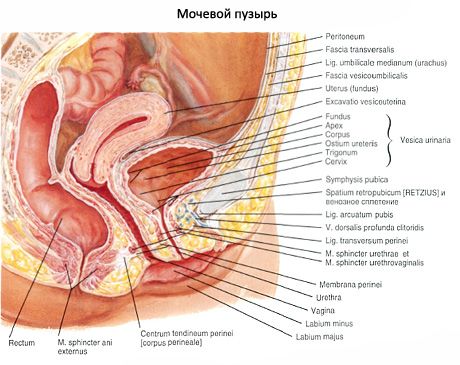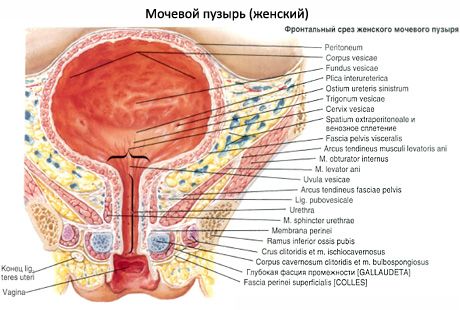Medical expert of the article
New publications
Female urethra
Last reviewed: 07.07.2025

All iLive content is medically reviewed or fact checked to ensure as much factual accuracy as possible.
We have strict sourcing guidelines and only link to reputable media sites, academic research institutions and, whenever possible, medically peer reviewed studies. Note that the numbers in parentheses ([1], [2], etc.) are clickable links to these studies.
If you feel that any of our content is inaccurate, out-of-date, or otherwise questionable, please select it and press Ctrl + Enter.
The female urethra, or female urethra (urethra feminina), is an unpaired organ that begins at the bladder with the internal opening of the urethra (ostium urethrae internum) and ends with the external opening of the urethra (ostium urethrae externum), which opens in front and above the opening of the vagina. The female urethra is a short, slightly curved tube with a convexity facing backwards, 2.5-3.5 cm long and 8-12 mm in diameter. Along its path, the female urethra is fused with the anterior wall of the vagina. Heading downward, the female urethra bends around the lower edge of the pubic symphysis from below and behind, piercing the urogenital diaphragm.


In the wall of the female urethra, a distinction is made between the mucous and muscular membranes.
The mucous membrane (tunica mucosa) has longitudinal folds and depressions on its surface - lacunae of the urethra (lacunae urethrales), and in the thickness of the mucous membrane are located the glands of the urethra (glandulae urethrales). The fold of the mucous membrane on the back wall of the urethra is especially well developed; it has the appearance of a ridge of the urethra (crista urethralis).
Outside the mucous membrane is the muscular membrane (tunica muscularis), which is divided into an internal longitudinal layer and an external circular layer. The circular layer, fused with the muscular membrane of the bladder, covers the internal opening of the female urethra, forming an involuntary sphincter. In the lower part, where it passes through the urogenital diaphragm, the female urethra is surrounded by bundles of muscle fibers that form a voluntary sphincter (m.sphincter urethrae).
The urethra of a newborn girl is 2.3-3.0 cm long, relatively wide, curved at the bottom, forming an obtuse angle, open to the front. The muscular membrane of the canal and the sphincter (external) of the urethra are formed in childhood (by 12-13 years).
What do need to examine?
What tests are needed?


 [
[